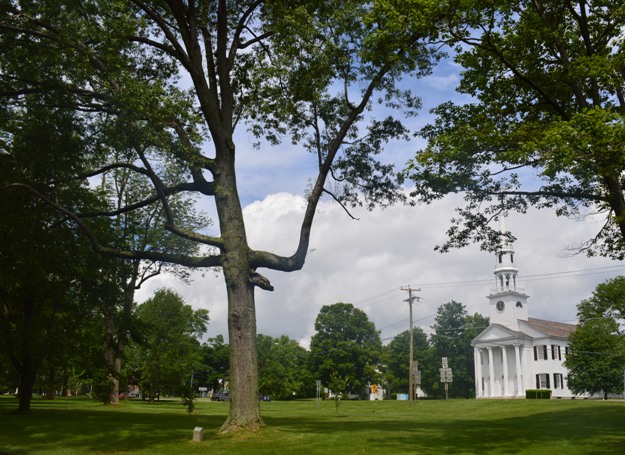by Peter Vermilyea
Connecticut, the “Constitution State,” has a unique history of state constitutions. The “constitution” celebrated on our license plates is the Fundamental Orders of 1638. (Although 1638 is the date signed on the document, many sources list the year as 1639 to make it conform to our current calender system.) This document made no mention of political allegiance to England; rather, it emphasized the responsibilities and authority of the local government. In 1662 the Fundamental Orders were replaced by the royal charter, which, thanks to the efforts of Connecticut Colony’s Governor John Winthrop Jr., maintained some aspects of the Fundamental Orders, including the right to elect certain officials. In 1818, nearly half a century after the Declaration of Independence, the state convened a constitutional convention to draft a state governance document consistent with its federal counterpart. In particular, former provisions establishing the Congregational Church as the official religion of Connecticut were deemed incompatible with the relatively recent First Amendment to the United States Constitution.
By 1901 it was apparent that there were significant flaws in the 1818 constitution. Senatorial and House districts were set up according to geographic rather than population guidelines. The end result was that Union, with a population of 1,000, had the same number of representatives as New Haven, with more than 100,000 residents. In 1901, Connecticut voters called for a constitutional convention by a 2-1 margin. The convention put forth a proposal that would award towns between one and four representatives based on population. This was not enough for the cities but too much for the small towns, and the proposal was voted down by another 2-1 margin.
Living Memorials to the 1818 Constitution of Connecticut
That convention would be all but forgotten except that each of the 168 delegates (representing every municipality in the state at that time) was given a pin oak seedling to plant in their town. Charles Andrews, one-time governor (1879-1881) and then chief justice of the state supreme court, was Litchfield’s representative and the presiding officer of the convention. He planted his at the eastern end of the town green.
| Periodic Surveys: | |
| 1902 | 168 |
| 1937 | 110 |
| 1986 | 86 |
| 2002 | 74 |
Periodic surveys of these trees have revealed dwindling numbers. Of the 168 original oaks, 110 were still standing in 1939 and 86 in 1986. The last survey, conducted in 2002, revealed only 74 remain. While a new state constitution was finally approved in 1965, Litchfield’s oak–a reminder of a failed constitution–still stands.
Peter Vermilyea, who teaches history at Housatonic Valley Regional High School in Falls Village, Connecticut, and at Western Connecticut State University, maintains the Hidden in Plain Sight blog and is the author of Hidden History of Litchfield County (History Press, 2014).
Note: ConnecticutHistory.org does not edit content originally published on another platform and therefore does not update any instances of outdated content or language.










